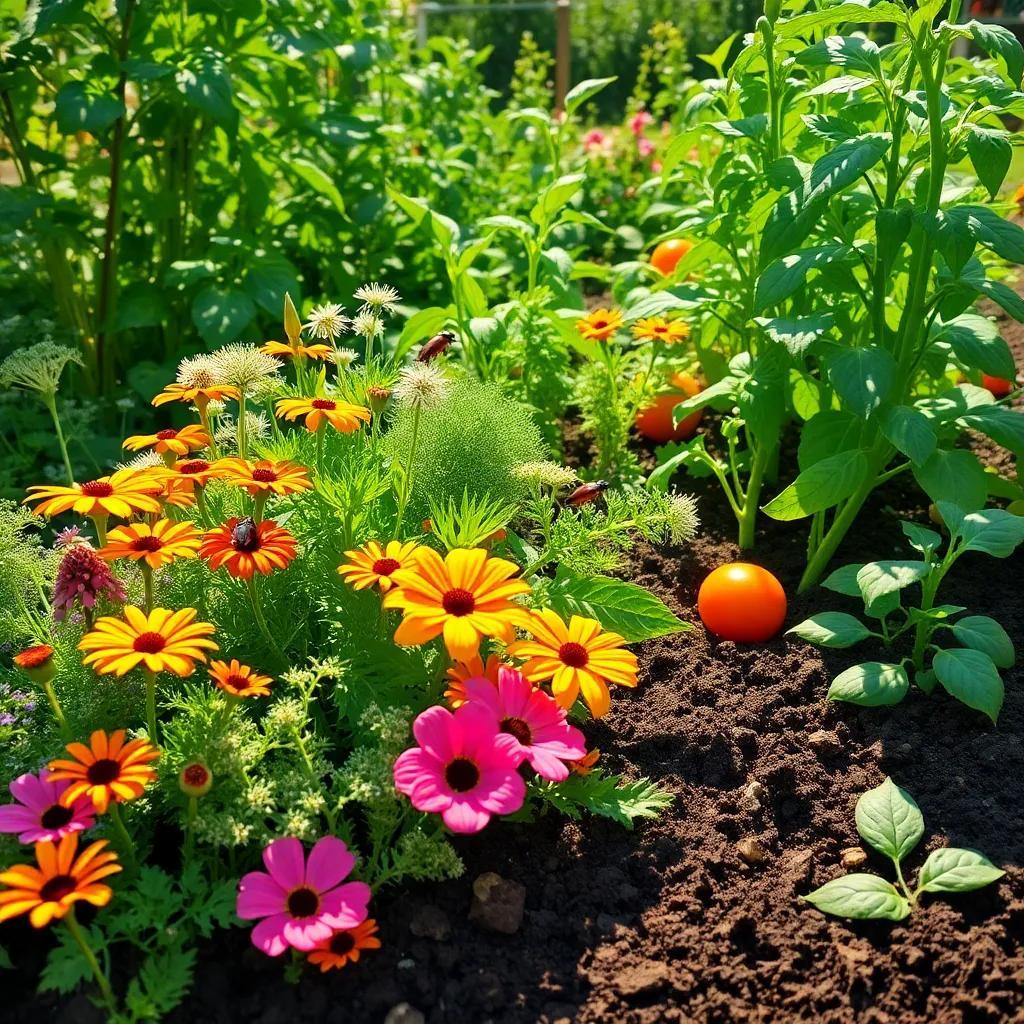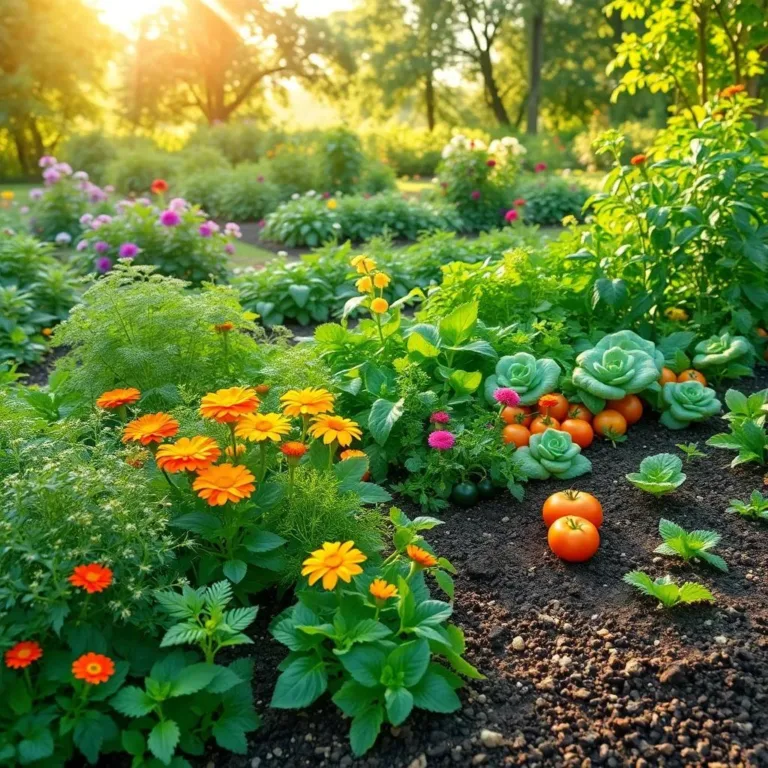Have you ever wondered how to keep those pesky pests away from your garden without relying on harsh chemicals? I’m excited to share some fantastic tips on using strategic plant selection and crop rotation to create a thriving, pest-free paradise! Together, we’ll explore how to outsmart those little invaders and boost the health of our plants, all while having a bit of fun along the way!
Encouraging Natural Pest Control with Strategic Plant Selection
When I think about gardening, I get excited about all the natural ways to keep pests at bay! One of my favorite methods is using strategic plant selection. It’s like throwing a garden party for beneficial insects, and everyone’s invited! By choosing the right plants, we can create a lively atmosphere that naturally attracts helpful critters. These little friends, like ladybugs and lacewings, love to munch on those pesky pests that try to invade our precious crops.
Here are a few tips to help you encourage natural pest control:
- Diversity is Key: Plant a variety of species! A mix of flowers, vegetables, and herbs can turn your garden into a buffet for beneficial insects.
- Companion Planting: Some plants work well together. For instance, marigolds attract beneficial insects while deterring harmful ones. Isn’t that cool?
- Host Plants for Beneficial Insects: Think about planting dill or fennel! These herbs attract not only beneficial insects but also help improve overall biodiversity in your garden.
When I choose plants, I think about how they can work together. It’s not just about growing your favorite veggies. It’s about creating a friendly neighborhood in your garden, where good bugs hang out and keep the bad bugs in check!
So next time you’re planning your garden, ask yourself: How can I make my garden the place to be for beneficial insects? It’s a fun approach that makes gardening feel like a team effort between me and nature!
Enhancing Soil Health through Crop Rotation Practices
I have found that one of the biggest secrets to a thriving garden is healthy soil. It’s like the foundation of a house; if it’s strong, everything else stands tall! This is where crop rotation comes into play. When I rotate my crops, I give my soil a chance to rest and regenerate. It’s almost like letting it take a little vacation!
Why does crop rotation matter? Well, here are some fantastic benefits:
- Nutrient Balance: Different plants absorb different nutrients. By rotating them, my soil doesn’t get depleted. For example, legumes, like beans, add nitrogen back into the soil, making it richer for the next round of crops!
- Disease Prevention: Just like you wouldn’t wear the same shoes every day, don’t plant the same crops in the same spot year after year! Rotating prevents pests and diseases from finding a comfy home in your soil.
- Better Structure: Some plants, such as deep-rooted ones, improve soil structure. Their roots break up compacted soil, making it easier for air and water to flow.
So, when I plan my garden layout, I think about the order of planting. I mix things up to keep my soil healthy and happy! With every rotation, I’m not just growing plants; I’m taking care of the earth beneath my feet. It feels good knowing that I’m contributing to a healthier garden, and you can, too!

Breaking Pest Life Cycles with Effective Crop Rotation
When I think about keeping pests away, I remember the saying, “Out of sight, out of mind!” That’s where effective crop rotation steps in! By changing the crops I grow in a particular area each season, I can confuse those pesky pests and disrupt their life cycles. It’s like playing a clever game of hide-and-seek with them!
Here’s why breaking pest life cycles is so important:
- Preventing Continuous Access: Many pests rely on specific plants to thrive. By rotating my crops, I create gaps in their food supply. This makes it tough for them to establish big populations, which means fewer pests to worry about!
- Disrupting Breeding Cycles: Some pests have a knack for breeding quickly. If I plant the same crop year after year, they have a constant buffet. But, when I mix things up with rotation, it becomes harder for them to reproduce. Less food equals fewer baby pests!
- Reducing Pesticide Use: With fewer pests to contend with, I’m less likely to reach for chemical sprays. Not only does this help the environment, but it also keeps my garden healthier!
So, when I plan my planting schedule, I think about how to keep those pests guessing! It’s a simple yet effective trick that benefits my plants, my soil, and my peace of mind!
Targeting Pest Vulnerabilities in Agricultural Systems
One of my favorite gardening strategies is targeting pest vulnerabilities. Just like how I have favorite snacks, pests have their own preferences! By understanding what these pests like, I can plant crops that they’re less attracted to. It’s like putting up a big “No Entry” sign for them!
Here’s how I go about it:
- Know Your Pests: I try to learn which crops attract certain pests. For example, cabbage moths love broccoli and kale. If I plan my garden with this in mind, I can avoid planting those favorites too close together!
- Utilizing Crop Families: Different plant families can repel or attract pests differently. For instance, if I plant Solanaceae crops like tomatoes, I might want to keep them away from other favorites of the same family. This breaks the cycle of attracting the same pests.
- Strategic Planting: I can use plants that pests dislike as barriers. For example, I might plant strong-smelling herbs, like mint, near my veggies. This gives pests a strong hint that they should find another snack!
By strategically targeting pest vulnerabilities, I give my plants the best fighting chance! It’s all about smart choices that keep my garden healthy and thriving!
Maximizing Crop Resilience through Diverse Plant Choices
A healthy garden is all about diversity—just like a well-balanced diet! By maximizing crop resilience through diverse plant choices, I can help my garden bounce back from challenges and resist pests more effectively. It’s a simple trick that makes a big difference!
Here are a few ways I like to do this:
- Mixing Different Plant Types: I always aim to plant a mix of vegetables, flowers, and herbs. This diversity helps create a more balanced ecosystem. Plus, it attracts a range of beneficial insects that help control pests!
- Seasonal Varieties: I rotate not only the crops but also the varieties I choose. Some may be more resistant to certain pests or diseases. By mixing it up, I keep pests guessing and reduce the chances of widespread damage.
- Supporting Soil Health: Diverse plant choices contribute to healthier soil! Different plants have unique root systems, which help improve soil structure. This leads to stronger plants that can fend off pests better.
By incorporating diversity into my planting strategies, I’m not just growing food—I’m creating a vibrant ecosystem that supports my garden’s health! So, let’s celebrate variety and keep our plants strong and resilient together!

